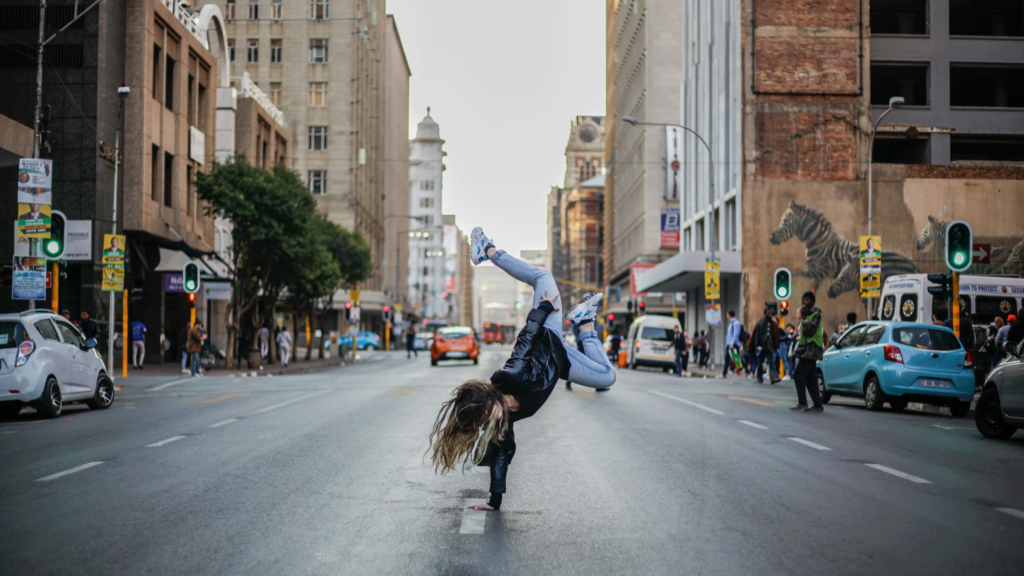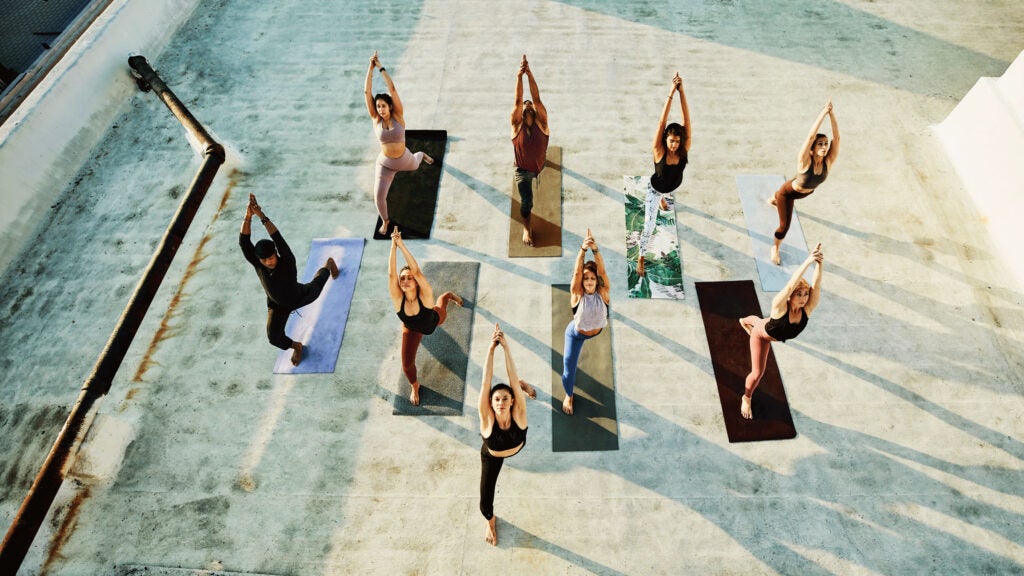“], “filter”: { “nextExceptions”: “img, blockquote, div”, “nextContainsExceptions”: “img, blockquote, a.btn, a.o-button”} }”>
Heading out the door? Read this article on the new Outside+ app available now on iOS devices for members!
>”,”name”:”in-content-cta”,”type”:”link”}}”>Download the app.
It’s not exactly a surprise that a lot of athletes struggle when learning yoga.
If you’re a runner, hiker, cyclist, triathlete, skier, climber, weightlifter, or any other type of endurance athlete, the repeated movement patterns and intensity of your training likely result in some seriously tight muscles. And that tension can make creating unfamiliar shapes with your body challenging.
That’s not the only workout-related pattern that make adjusting to yoga a challenge. Following are some common habits that athletes confront when practicing yoga but may not realize along with how to sidestep them. Because if you take the time to work yoga into your training, you want to maximize its efficiency and lessen its annoyance. The following advice can help.
And in case you aren’t familiar with the perks of yoga for athletes, they include the release of long-held muscular tension, improved mobility, attention to underdeveloped muscles, more efficient breathing, and enhanced body awareness so you can address aches and strains before they become injuries. (Convinced yet?)
5 Common Issues Athletes Experience in Yoga
The following are relevant whether you’re taking class online at home or in a crowded yoga studio.
1. Ignoring Muscle Tightness
“Any time a muscle is overly tight—be that stiff, short, or tight—one of the biggest concerns is potential injury, like tearing a muscle due to its inability to extend and contract,” says Katya Campbell, a certified movement and mobility specialist, yoga teacher, and CrossFit coach in British Columbia.
Even the most subtle issue with tightness not only compromises flexibility but can create a domino effect above and below the affected joints. That’s because everything is connected through fascia, muscles, ligaments, tendons, and joints. Something going on with your left ankle will eventually affect your knees, hips, back, and potentially your shoulders if left unadressed.
“Tightness can also add undue strain on other parts of our body that need to compensate for this lack of movement,” says Campbell. She explains that cyclists and runners tend to experience consistently tense hamstrings. This can lead to issues in poses that rely on the hamstrings to have a certain measure of flexibility. When these muscles are taxed beyond their ability to stretch, the lower back compensates, which causes strain and pain in the lumbar region.
For example, if you practice Standing Forward Bend with tight hamstrings and force yourself to try to reach your hands to the floor, you may overstretch the muscles in the lower back and the small ligaments between the lumbar vertebrae. This is because the limited range of motion and extensibility in the hamstrings cause the lower back muscles to compensate, potentially leading to injury. Taking a modification (see below) or simply allowing yourself to not force the stretch can be the difference between struggling with a stretch and allowing it to do its intended work.
2. Not Modifying a Yoga Pose
It’s not uncommon for high-performing athletes to consider trying a variation of a yoga pose as taking the easy way out or even “cheating.” But these modifications exist to allow for a safer practice.
When you attempt an unfamiliar shape in yoga, it can be easy to fixate on the alignment you see a teacher practice. But the truth is, each pose looks different in each body, especially if you have tight muscles.
Allowing for a slight bend in the knee during a Standing Forward Bend rather than keeping your legs straight or supporting your body with pillows and bolsters are some of the ways that you can modify yoga poses to compensate for inflexibility or difficulty holding properly. Using yoga blocks and other props help support your body. They can bring the ground up to your hands to reduce strain on tight muscles.
RELATED: 20 Yoga Hacks if You Have (Unbearably) Tight Hamstrings
3. Relying on Strength-Training Habits
There are a handful of strength-training exercises that are identical to yoga. For example, the same exact shape and muscle engagement takes place in Bridge Pose and various types of lunges regardless of whether you’re practicing yoga or bodyweight training.
But some strength-training exercises may look identical in alignment but are distinctly different in muscular engagement. If you are transitioning to yoga from strength training or any other sort of training and have become accustomed to specific techniques, work with a yoga teacher or follow a guided yoga workout to learn the posture and muscle engagement each poses in yoga demands.
4. Holding Your Breath
The breath is typically secondary to the physical intensity of a sport’s demand. Think of weightlifters who engage in high-intensity strength training, such as barbell back squats, which involves holding the breath to brace the spine and core.
Alternatively, yoga is as much about breathwork as it is about movement. Some styles of yoga connect your motion to the rhythm of your inhalations and exhalations whereas others ask you to remain still while you slowly breathe. The key here is breathing steadily and deeply, in and out through the nose, in a slow and steady rhythm.
5. Rushing
If you already cram an hour or so of training into your already packed day, you might not be included to take a few minutes to stretch as part of your cool-down. And if you do, chances are you rush through them. But this shortchanges the benefits of yoga for athletes.
Not only is it important to hold a pose for enough time to actually strengthen or stretch the muscles, that sustained focus is an essential aspect of becoming centered, decreasing stress, and turning inward to connect your mind and body.
The good news is that a yoga routine doesn’t need to be long to be effective. For example, I usually spend just 10 to 15 minutes working through my yoga for marathon runners routine.
But there is an important caveat: the goal is to be mindful and present. Yoga is much more about quality over quantity.
Slowing down in and of itself is one of the main benefits of yoga for strength and endurance athletes. I recommend holding yoga poses for 30 to 60 seconds each. This length of time will strengthen muscles in poses such as Boat, Plank, or any of the Warrior poses.
And when you’re stretching, that amount of time allows your sensory receptors to relay messages to the spinal cord and brain to relax the muscle fibers, tendons, and connective tissues so that you can maximally benefit from the stretch rather than just check it off your list.
Lingering a little longer in the stretch also ensures you have enough time to settle into the pose, become aware whether you’re engaging or releasing the correct muscles, evaluate how your body is responding to the pose, and noting which muscles are resistant and could use further work your next session.
Each of these takeaways from practicing yoga for athletes provides an avenue to reduce the likelihood of injury, enhance your awareness of smaller muscles, and improve your mind-body connection. This enables you to engage the correct muscles while you run, bike, or perform whatever type of exercise has you training numerous hours per week.
So when you take the time to practice yoga, make certain you’re actually practicing yoga. The difference is that you’ll actually experience its effect on your training and your recovery.







